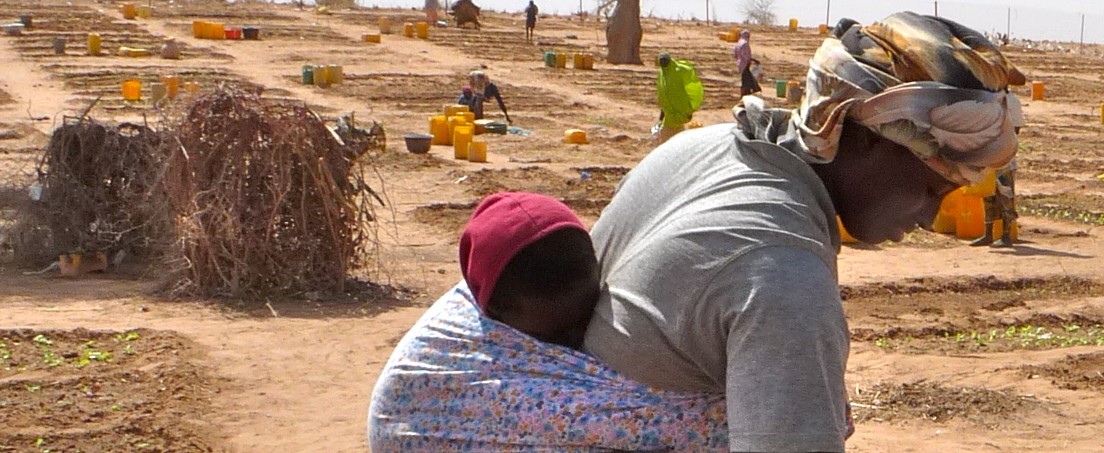Urban
Taxonomy Term List
Advancing Albania’s planning for medium and long-term adaptation through the development of a National Adaptation Planning (NAP) process
This project is designed to help the Government of Albania increase its capacity to address the country’s climate change vulnerabilities by supporting the development of a national plan for climate change adaptation. The support focuses on 1) strengthening the national mandate, strategy and steering mechanism for assessing and addressing capacity gaps (particularly in the priority sectors of tourism, urban development, agriculture, transport, and energy); 2) develop a National Adaptation Plan (NAP) Strategy action plan and implementation plan, and 3) develop financing, monitoring and evaluation strategies to ensure that capacities and funding options are institutionalized for the long-term sustainability of adaptation planning beyond the life of the project.
With financing from the Green Climate Fund, the project "Advancing Albania’s planning for medium and long-term adaptation through the development of a National Adaptation Plan (NAP) process" is supporting the Government of Albania to increase its capacity to address the country’s climate change vulnerabilities.
Albania’s primarily rural population is highly vulnerable to the effects of climate change, where extreme rain events frequently result in destructive flooding, while agricultural livelihoods and drinking water supplies are threatened during dry periods. As temperatures rise, climate scenarios predict increased severity and frequency of these extreme wet and dry conditions, along with decreasing annual rainfall. These changes place Albania’s population at risk and pose a threat among others to the hydropower and tourism industries.
To address these vulnerabilities, the Government of Albania launched its NAP process in February 2015, with the support of GIZ and UNDP, through consultations with national stakeholders and a stocktaking exercise. A preliminary roadmap for the NAP implementation was formulated and validated by representatives from the Ministry of Tourism and Environment, as well as stakeholders from the Inter-ministerial Working Group on Climate Change (IMWGCC).
The analytical exercises highlighted the existing weaknesses and demonstrated the prevailing barriers to climate change adaptation (CCA) planning in Albania. The results confirmed that to adequately address climate change vulnerabilities, Albania must overcome information gaps, vulnerability assessments, climate adaptation planning capacity weaknesses, and a lack of awareness of CCA – both at national and sub-national levels. In addition, climate change is not integrated into existing environmental and development policies or their associated budget priorities, and financing appropriations for adaptation are absent.
The underlying challenge lies in the lack of a comprehensive framework for adaptation in Albania. The National Communications provide a preliminary assessment of adaptation priorities, while a national NAP Framework Document was developed as part of the NAP preparation and stocktaking process in 2016. To leverage these preliminary activities towards climate resilience, this readiness effort aims to address the weaknesses and barriers identified in the NAP Framework Document.
In September 2021, Albania submitted its National Adaptation Plan, including a comprehensive financing strategy to the UNFCCC.
The project aims at delivering the following results under the three main outcomes:
- Strengthen legal and institutional framework and mandate for climate change adaptation work at the national level;
- Upgrade stocktaking on climate vulnerabilities, adaptation opportunities and development needs and update vulnerability analyses;
- Address adaptation related capacity gaps at national and subnational levels;
- Establish long-term adaptation capacity development methodologies to ensure ongoing skills development and increased awareness of climate change adaptation;
- Formulate NAP Strategy action plan and the accompanying communications plan;
- Promote CCA integration into existing planning and budgeting and cross-sector coordination;
- Develop NAP implementation plan;
- Establish systems to monitor NAP process and adaptation progress;
- Identify options for securing and scaling up financing for adaptation; develop a financing plan.
Project Updates
After the inception workshop in December 2021, the project, in collaboration with stakeholders, established criteria for selecting up to eight municipalities for climate change adaptation roadmaps and identified priority sectors for analysis. UNDP signed a Memorandum of Understanding with Tirana Polytechnic University and the Institute of Geosciences (IGEO) to foster cooperation.
The project also supported the development of a new legal proposal to update the mission of the IGEO to include CCA, as well as the operational manual for the Interministerial Working Group on Climate Change and a draft reporting format for the National Climate Change Committee (NCCC).
Since 2022, the project team has accelerated project implementation, making significant progress in strengthening the institutional framework and capacities for CCA planning. This involved concluding procurement services to implement activities.
Recent successes include the establishment of the NCCC and the finalization of its Operations Manual, the development of a Monitoring, Reporting, and Verification (MRV) system, and progress on legal acts related to the IGEO. Additionally, work was undertaken on climate and socio-economic data analysis, inventory of adaptation projects, capacity assessment at national and subnational levels, and training programs.
In 2023, various stakeholders were engaged and sensitized on the NAP process. Activities have included refining vulnerability and risk assessments, developing a national database for climate change scenarios and sector vulnerability assessment, compiling a regional climate change scenario report, finalizing the expanded stocktaking report organized by priority sectors, and delivering guidelines and screening tools for gender-sensitive CCA planning.
Outcome 1: Institutional and capacity gaps assessed and addressed.
Outcome 2: NAP Strategy action plan finalized and implementation plan in place.
Outcome 3: Financing strategy and monitoring and evaluation for climate change adaptation in medium – to long-term established


Readiness for the National Adaptation Plan Process in Argentina
The project supported the Government of Argentina in establishing its adaptation planning process. This involved identifying gaps, capacity building, and integrating climate change considerations across national, regional, and local levels. By doing so, the project facilitated the assessment and reduction of vulnerability to the adverse effects of climate change by integrating climate change adaptation into the country's development strategies.
The scope of the project included the preparation of the National Adaptation Plan (NAP) with a regional and multi-sectoral approach. Additionally, it involved the development of a system to monitor and assess adaptation needs and measures under the Law 27250 Minimum Standards for Adaptation and Mitigation to Climate Change (Ley de Presupuestos Mínimos de Adaptación y Mitigación al Cambio Climático). To achieve the proposed outcomes, the project developed a communication strategy on climate change adaptation, carried out a series of studies to identify adaptation options, and supported inter-sectoral and inter-jurisdictional collaboration within the framework of the National Cabinet on Climate Change (NCCC), the Federal Environment Council (COFEMA), and the National System for Comprehensive Risk Management (SINAGIR).
In recent years, Argentina has made decisive progress in planning and implementing measures to adapt to climate change. The National Communications on Climate Change have made valuable contributions, such as providing information, conducting diagnoses, and identifying various information gaps. Within the framework of the National Climate Change Cabinet (NCCC) work, several sectoral initiatives that are directly or indirectly related to climate change adaptation were identified, as well as other information and capacity needs.
This project, funded by the Green Climate Fund (GCF) NAP Readiness Programme, aimed to deepen this work by supporting National Adaptation Plan (NAP) development. This involved facilitating the evaluation and reduction of vulnerability to the adverse effects of climate change by integrating climate change adaptation into Argentina’s development strategies.
The “Readiness for the National Adaptation Plan Process” project was launched in March 2019 to support Argentina’s efforts to assess and reduce climate change vulnerability by integrating climate change adaptation into the country's sustainable development. To achieve this goal, the project aimed to build adaptive capacity and resilience. It sought to integrate climate change adaptation into both new and existing policies, programmes, activities, and development planning processes and strategies across relevant sectors at different levels.
In particular, the project supported the Government of Argentina to:
1) Establish a national process to coordinate adaptation planning at all relevant scales with a medium and long-term perspective.
2) Identify capacity gaps and strengthen capacities for adaptation planning and implementation, integrating adaptation to climate change into national, provincial, and municipal development planning processes.
3) Support the preparation of the NAP with a regional and multi-sectoral approach in the framework of the National Climate Change Cabinet.
4) Establish a system for monitoring and assessing needs and adaptation measures.
5) Design a communication strategy on adaptation to climate change, focusing on the most vulnerable populations and improving climate information services; and
6) Support inter-sectoral and inter-jurisdictional collaboration within the framework of the National Cabinet on Climate Change.
In most of non-Patagonian Argentina, the average temperature has increased up to half a degree between 1960 and 2010, with smaller increases in the center of the country. These changes have already affected natural and human systems, and according to climate projections, impacts will intensify. More frequent and intense rainfall has resulted in more frequent floods, while dry winter periods have become longer in the west and north of the country. This has adversely affected water availability for some populations, increased the risks of grassland fires, and caused livestock stress.
Argentina has committed to addressing climate change adaptation systematically and inclusively through actions and initiatives articulated in its National Adaptation Plan, its 2016 National Determined Contribution (NDC), and it’s second NDC in 2020. The NDCs and further work implemented within the framework of the National Cabinet on Climate Change detected various information gaps and sectoral initiatives that are directly or indirectly linked to climate change adaptation. The project focused on addressing these identified gaps, including establishing a baseline for the country's adaptation situation and initiating a participatory planning process.
The project goals were achieved through three main outcomes and their corresponding activities.
Outcome 1: Institutional strengthening and coordination for the formulation and implementation of the NAP process
Activities under this outcome focused on initiating the NAP process at the national level under the framework of Law 27250 and focused on strengthening governance and institutional coordination for adaptation planning. This involved developing an appropriate strategy and relevant institutional arrangements and support, such as the formalization of the External Advisory Council through consultation with representatives of civil society organizations, political parties, academia, and Indigenous people, and setting clear groundwork. The strategy outlined clear responsibilities for government ministries and departments, specified milestones and expected outputs of the NAP process, and improved coordination and cooperation mechanisms. The approach included participatory and inclusive approaches with Indigenous communities and others to identify climate risks, impacts, and subsequent mitigation strategies. This extended to the participatory formulation of the National Adaptation Plan and support for provinces in developing Subnational Response Plans. Regulatory support further strengthened the National Climate Change Cabinet, which approved the National Plan for Climate Change Adaptation and Mitigation.
Outcome 2: Awareness raising and capacity building
This outcome built capacities to reduce vulnerability to climate change and facilitate the integration of adaptation into development. A comprehensive education, awareness, and communication strategy in climate change adaptation was created encompassing various components, such as education, awareness, access to public information, citizen participation, culture, and international cooperation. A national-level social perception study facilitated the elaboration of this strategy and evaluated audience needs and preferences. Moreover, the Climate Risk Maps Platform (SIMARCC) was updated, functioning as an interactive tool that identifies climate change risks by illustrating communities and ecosystems with the highest socio-environmental vulnerability.
Training was conducted to promote the evaluation, planning, and implementation of adaptation measures. Workshops and training sessions strengthened subnational climate teams, equipping officials at that level with the necessary tools for the development of adaptation plans. Furthermore, private sector engagement was catalyzed through the launch of the Climate Action Agreement with the Private Sector. This aimed to facilitate collaboration between public and private sectors to achieve Argentina’s climate commitments through a platform for exchange and continuous training.
Outcome 3: Baseline definition; formulation of NAPs; implementation, monitoring and reviewing
Outcome 3 involved broad climate risk analyses identifying ‘adaptation deficits.’ This included vulnerability assessments at specific planning levels within the national context that can inform impactful adaptation solutions.Various studies were conducted on topics such as transport supply chains, regional economies, social vulnerability, economic impacts of climate change, health, and cultural heritage to facilitate risk analysis and identify adaptation options. The project also supported the elaboration of provincial adaptation plans by hiring individual consultants to strengthen the provincial climate teams. Risks and needs at the regional level were identified following economic loss estimates and sector-specific damage assessments.
In collaboration with provincial teams and civil society, a multi-criteria analysis tool was developed to prioritize adaptation measures within the NAP. Measures were prioritized based on their contribution to short- and long-term sustainable socioeconomic development, costs, effectiveness, and efficiency at national and subnational levels. Additionally, efforts were made to identify existing adaptation initiatives within national government areas. Moreover, a strategy for implementing and monitoring the NAP, involving priority measures, was developed. This included the design of the NAP monitoring, evaluation, and learning (MEL) system.
Outcome 1: Institutional strengthening and coordination for the formulation and implementation of the NAP process.
Outcome 2: Awareness raising and capacity building.
Outcome 3: Baseline definition, formulation of NAPs, implementation, monitoring and reviewing.


National Adaptation Plan (NAP) support project for adaptation planning and implementation in Azerbaijan
Financed by the Green Climate Fund (GCF) this project will support the Government of Azerbaijan (GoA) to facilitate the development of the National Adaptation Plan (NAP) and improve climate change adaptation (CCA) actions in three priority sectors identified by the Ministry of Ecology and Natural Resources (MENR) of the Republic of Azerbaijan through stakeholder consultations: water, agriculture and coastal areas. The NAP readiness support aims to increase climate resilience and adaptation capacity in three priority sectors through the implementation of actions that will reduce or eliminate barriers for an effective adaptation process at the national and local levels.
The primary beneficiaries from this GCF project include the national government, specifically agencies in the three priority sectors, as well as local communities.
The main objective of the “National Adaptation Plan (NAP) support project for adaptation planning and implementation in Azerbaijan” is to increase capacity on climate resilience and adaptation in three priority sectors to reduce or eliminate barriers for an effective adaptation process at the national and local levels.
The Nationally Determined Contributions (NDC) submitted by Azerbaijan in 2017 highlights the need to “develop relevant adaptation measures for decreasing or minimizing the losses that may occur at national, local and community levels per sector.” The priority sectors were identified as water, agriculture and coastal areas. The expected increase in extreme events on the Caspian Sea coastal areas, such as extremely high waves, strong winds and flooding, make those areas particularly vulnerable to climate change and requires the development of targeted adaptation programmes. The stocktaking exercise in 2017 has identified barriers including: a) Limited access to data including limited data exchange by stakeholders in Azerbaijan; b) Insufficient institutional and technical capacity on climate change adaptation at managerial, expert/practitioners and community levels; c) Limited mainstreaming of adaptation in national, regional, local and sectoral planning, budgeting and regulatory framework; d) Limited institutional coordination; and e) Limited monitoring, evaluation and analysis of past and current programmes on climate change adaptation.
This project aims to address the identified barriers and improve adaptation planning in Azerbaijan focusing on three main areas:
- Improve data availability, access and sharing for decision making. The project will establish mechanisms and data solutions to facilitate increased access and sharing of climate and weather information in Azerbaijan, as well as improve the coordination among institutions.
- Enhance institutional and technical capacity for climate change adaptation in water, agriculture, and coastal areas. Limited institutional and technical capacity hinders not only the mainstreaming of CCA considerations into planning processes, but also the implementation of adaptation actions at the national, regional and local levels. A national gender-sensitive CCA capacity building programme will be developed that addresses the gaps in knowledge and capacity of key stakeholders at all levels: from government decision makers and technical personnel, to local communities and the private sector.
- Increase mainstreaming of CCA considerations into planning at national, regional, local levels in the priority sectors. An Adaptation Working Group (AWG) will be established at the national level, a body that will coordinate the development of a NAP Roadmap document. Further planned activities to advance mainstreaming include the development and application of tools (manuals, guidelines) for the inclusion of CCA considerations into sectoral planning, the improvement of the legal framework for adaptation in priority sectors (water, coastal areas, agriculture), the screening, appraisal and accounting of adaptation in public and private investments and the development and implementation of a monitoring and evaluation (M&E) system for adaptation that is compatible with the Strategic Development Road Maps (SDRM) of Azerbaijan.
Project updates
- Comprehensive assessment of existing and needed climate data and vulnerability studies and supplemental CCA vulnerability studies for priority sectors completed.
- Charter for Adaptation Working Group established to coordinate adaptation planning at the national level.
- Climate Vulnerability Index for the country was developed and is available for use. Gender workplan for the project was developed and is used for the project activities.
- Capacity needs assessment for the development of ‘university specialized diplomas and certificates’ for climate change adaptation was conducted.
- The process to develop an online climate change platform is initiated.
- The analyses of the National Legislation on Climate Change was conducted, and the recommendations are being followed-up, including the preparation of new legal documents.
- The series of capacity building and public awareness workshops/seminars for technical personnel and students were organized in the capital as well as in the different regions of Azerbaijan.
- The capacity needs assessment for the decision-makers was conducted and policy briefs were prepared accordingly.
- A workshop, co-hosted by the United Nations Development Programme (UNDP) and the Ministry of Ecology and Natural Resources (MENR), on “Preparation of National Adaptation Plan” was organized to deliver recommendations and possible amendments for Azerbaijani legislation on effectively tackling the impacts of climate change.
- The Project team in collaboration with the Ministry of Ecology and Natural Resources and the Ministry of Agriculture, organized a series of training sessions on “Climate change adaptation in agriculture” to discuss climate impacts and Azerbaijan’s agricultural problems with the local communities.
- In collaboration with the Ministry of Ecology and Natural Resources, the NAP project team held three study tours for Azerbaijan’s government representatives, with a special focus on climate change impacts on the vulnerable sectors.
- The Projects team delivered modern equipment to the Situation Center under the National Hydrometeorological Service.
- In collaboration with the Ministry of Ecology and Natural Resources, the NAP project team organized three study tours for Azerbaijan’s government representatives, with a special focus on climate change impacts on the vulnerable sectors.
- The NAP project team held the School Symposium on Climate Change Mitigation and Adaptation measures for schoolchildren in April 2023. The symposium provided a platform for high school students to showcase their research projects on climate change mitigation and adaptation measures.
- NAP project team has recently organized a study tour for Azerbaijani government representatives, in partnership with the Ministry of Ecology and Natural Resources. Focused on climate change impacts in vulnerable sectors, the tour aimed to educate government officials on effective adaptation practices, particularly in regions facing heightened vulnerability.
Outcome 1: Improved data availability, access, and sharing for decision making.
Outcome 2: Enhanced institutional and technical capacity for climate change adaptation in water, agricultural and coastal areas.
Outcome 3: Increased mainstreaming of climate change adaptation considerations into planning at national, regional, local levels in priority sectors.
UNDP Press release: EU & UNDP keep taking actions to address climate change (2023)
Report.az: UNDP ready to support Azerbaijan’s efforts to combat consequences of climate change (2023)
Azerbaycan24: UNDP ready to support Azerbaijan’s efforts to combat consequences of climate change (2023) Also available in Azerbaijani and Russian.
Video: AzTv on YouTube (in Azerbaijani) (2023)
Knowledge competition dedicated to the World Environment Day was held (2022)
Azerbaijan marks the start of the National Adaptation Plan process for climate change resilience (2021)
Issues related to climate change adaptation plan were discussed (2021)
Issues related to climate change adaptation plan were discussed in ADAU (2021)
Coverage on social media
UNDP Project team collaboration with the Ministry of Ecology and Natural Resources, held three study tours for Azerbaijan’s government representatives on Facebook, X and Instagram.
UNDP organized a study tour for Azerbaijani government representatives, in partnership with the Ministry of Ecology and Natural Resources (Media coverage from Reportyor.za)
The Projects team delivered modern equipment to the Situation Center under the National Hydrometeorological Service on Facebook and X (2023).
Training in Guba and Khachmaz on Facebook, X and Instagram (2023).
Training in Salyan and Neftchala on Facebook, X and Instagram (2023).
Training in Lankaran on Facebook, X and Instagram (2023).
Training in Nakhchivan and Sharur on Facebook, X and Instagram (2023).
A workshop with UNDP and the Ministry of Ecology and Natural Resources (MENR), on “Preparation of National Adaptation Plan” was organized to deliver recommendations and possible amendments for Azerbaijani legislation on effectively tackling the impacts of climate change and featured on Facebook, X and Instagram.

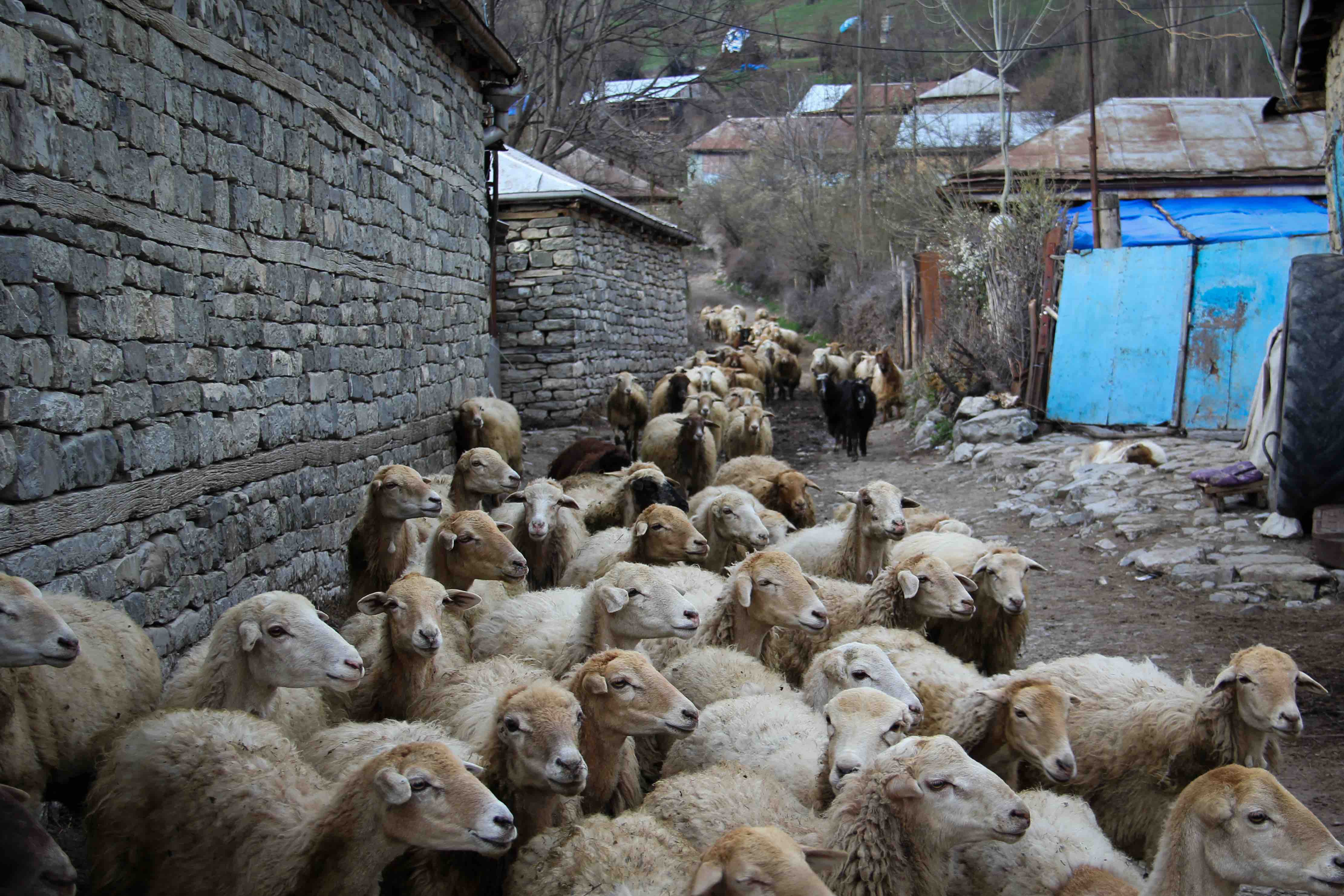
Formulation and Advancement of the National Adaptation Plans Process of Egypt
The project is advancing the development of Egypt’s National Adaptation Plan (NAP) with the goal of decreasing vulnerability to climate change. This NAP process is helping Egypt to build climate resilience by improving institutional and technical capacity for climate change adaptation planning, evaluating climate risks, determining adaptation priorities, integrating adaptation into national and sectoral planning and budgeting, and increasing investment in adaptation actions.
The project is expected to equip the Government and relevant ministries with information on climate risks and vulnerabilities and priority adaptation areas, as well as help the government to implement effective adaptation planning.
The project “Formulation and Advancement of the National Adaptation Plans Process of Egypt” started in July 2021 with the main objective of decreasing Egypt’s vulnerability to climate change by advancing the NAP development. The NAP project is helping the country build climate resilience by improving institutional and technical capacity for climate change adaptation planning, examining climate risks, determining adaptation priorities, integrating adaptation into national and sectoral planning and budgeting, and increasing investment in adaptation actions.
Climate change impacts in Egypt include the rising sea level, extreme weather events such as heat waves, flash floods, heavy precipitation, sand and dust storms, and water scarcity. These complex climate-related challenges threaten agriculture, food security, human health, and the national economy. Egypt‘s ability to respond to these impacts is challenged by low technical capacity for adaptation planning and limited information on climate risks and vulnerabilities. To address the risks, the Government of Egypt began a NAP process in May 2015, which resulted in a roadmap for advancing adaptation planning.
The 2017 stocktaking exercise assessed accomplishments since 2015 and identified priority interventions for the NAP process. Based on this assessment, the NAP project focuses on the following outcomes: (1) Strengthening institutional and human capacities to coordinate and manage climate change adaptation planning and implementation; (2) Developing an integrated national climate risk assessment and identifying adaptation priority areas for inclusion in a National Adaptation Plan Framework document; and (3) Mainstreaming adaptation priorities into national planning and budgeting processes.
Target outcomes will equip Egypt with the required climate risk information and understanding of priority adaptation areas to enable the government to conduct effective adaptation planning and start integrating climate adaptation into national development planning and budgeting. As a result of project activities that improve capacity and climate adaptation governance, national ministries and the Government of Egypt will be empowered to help programs and projects across national and sub-national processes be more climate risk-informed, and climate adaptation indicators will be specifically incorporated into the national development strategy “Egypt Vision 2030”.
Recent Activity
The Food and Agriculture Organization (FAO) hosted a training workshop as part of the FAO-UNDP SCALA program(Scaling up Climate Ambition on Land Use and Agriculture through Nationally Determined Contributions and National Adaptation Plans). The workshop focused on facilitating dialogues within the Ministry of Agriculture and the Ministry of Environment, providing skills to generate crucial information on climate impacts and solutions in agriculture. The insights are contributing to Egypt's NAP process, aligning with the national vision for 2030 and sustainable development. The SCALA program, funded by the German Federal Ministry for the Environment, Nature Conservation, Nuclear Safety and Consumer Protection (BMUV) through the International Climate Initiative (IKI), aims to integrate climate-resilient agricultural practices into NAPs and enhance capacities for effective climate risk management in Egypt.
Outcome 1: Strengthening institutional and human capacities to coordinate and manage climate change adaptation planning and implementation;
Outcome 2: Developing an integrated national climate risk assessment and identifying adaptation priority areas for inclusion in a National Adaptation Plan Framework document;
Outcome 3: Integrating adaptation priorities into national planning and budgeting processes.
SCALA supports Egypt with integrating agriculture into the National Adaptation Plan (2023)
Video: Using the power of nature to fight climate change in Egypt (2023)
NAP Inception Workshop (2023)
Egypt scales up climate adaptation actions of its agriculture, water and agrifood sectors (2022)
Egypt’s Environment Ministry signs document formulating National Adaptation Plan (2021)
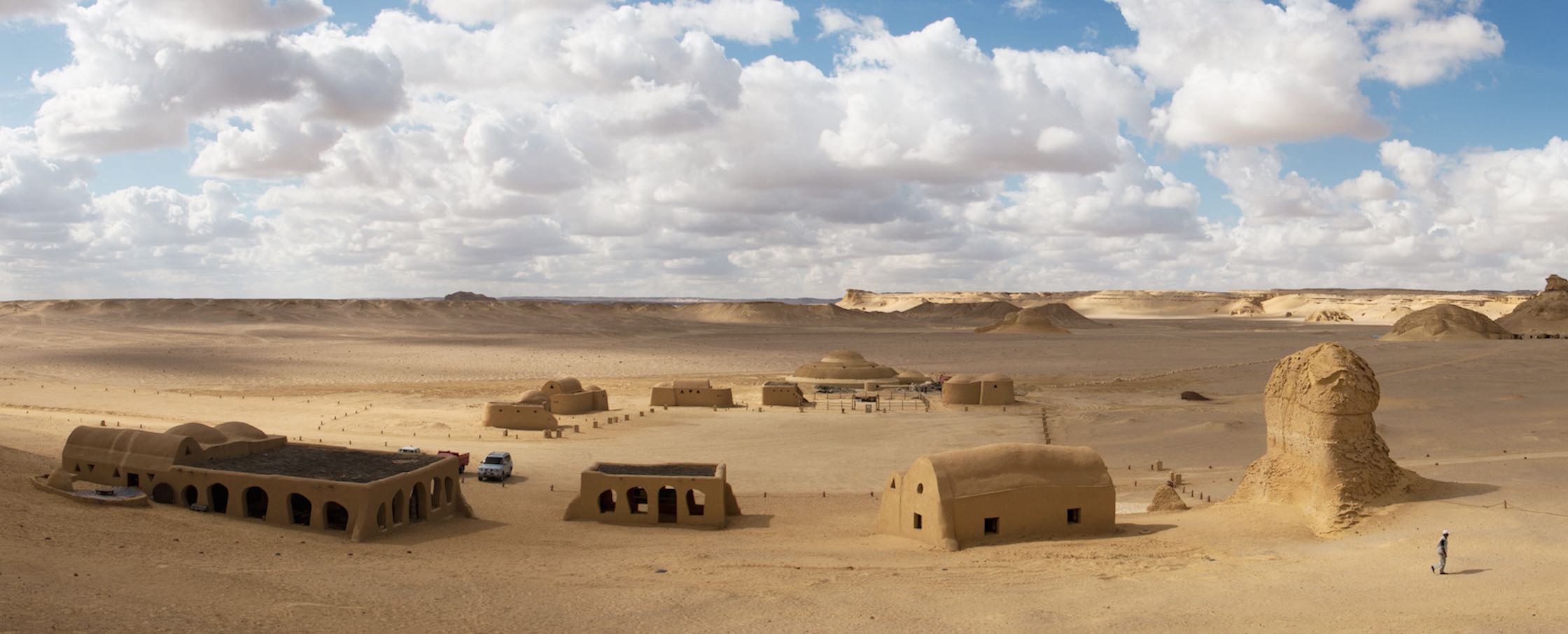
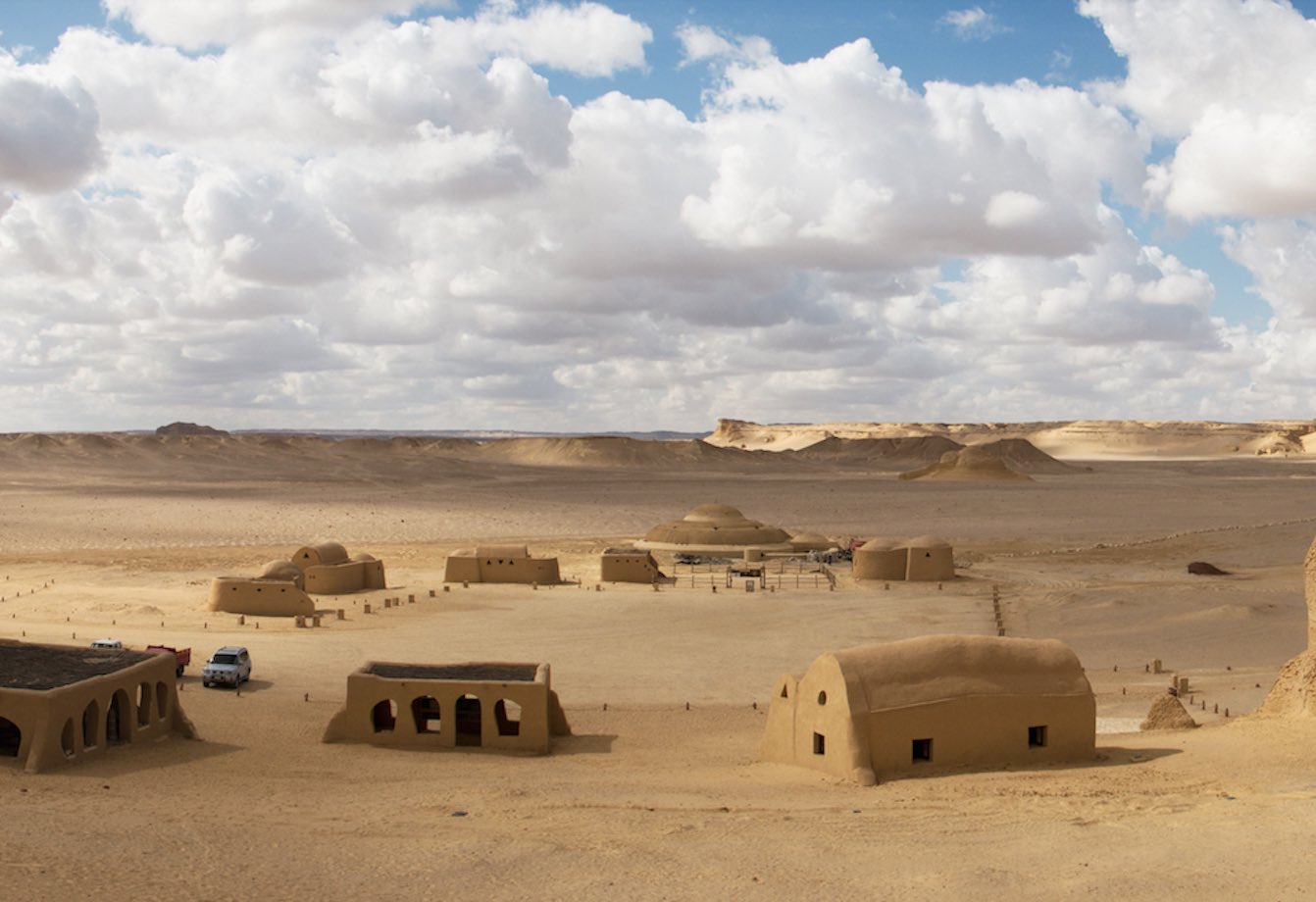
Enhancing Research and Policy Linkages to Advance National Adaptation Planning in Guinea
The project helped Guinea to increase its capacity to adapt to climate change impacts by strengthening linkages between research policy, mainstreaming climate change adaptation into sectoral and local planning and budgeting, and advancing national funding mechanisms and private sector engagement. The project addressed the main barriers that were identified during an earlier stocktaking exercise, including the lack of links between research and policymaking, weak measurement, evaluation and funding mechanisms, and insufficient private sector engagement in adaptation efforts.
The main objective of the project “Enhancing research and policy linkages to advance National Adaptation Planning in Guinea” was to increase Guinea’s adaptive capacity to cope with climate change impacts. The project established research to support informed decision-making and capture opportunities that arise both from public funding and the private sector.
Guinea is experiencing negative socio-economic impacts of climate change due to its exposure to sea level rise, droughts, and flooding. Its Nationally Determined Contribution (NDC), submitted in 2015 and revised in 2021, outlines climate change adaptation priorities, such as the preservation and restoration of water resources, protection of ecosystems particularly in coastal zones, and ensuring food security of rural communities.
Based on stakeholder consultations and stocktaking conducted in 2016 and 2018, the main barriers to climate change adaptation mainstreaming and financing were identified as (1) the absence of links connecting research to policy to inform decision-making processes; (2) weaknesses in and/or fragmentation of existing coordination, monitoring & evaluation (M&E), and funding mechanisms; (3) the absence of adaptation in the Planning-Programming-Budgeting-Monitoring and Evaluation (PPBSE) procedures; and (4) lack of private sector involvement in the adaptation landscape.
The project aims to remove these barriers by achieving the following objectives under the three main outcomes:
1. Research-policy linkages and knowledgebase are strengthened to inform adaptation planning and decision-making:
- Establish research-policy linkages to support the NAP (National Adaptation Plan) formulation and implementation;
- Develop a climate risks and vulnerability evidence base that informs the identification and prioritization of adaptation options in the sectors of agriculture, livestock, and forestry.
2. Climate change adaptation mainstreaming is facilitated by reinforcing coordination and M&E mechanisms:
- Operationalize a sustained and suitable coordination mechanism to support mid and long-term adaptation;
- Enhance adaptation mainstreaming into sectoral and local planning and budgeting;
- Establish adaptation M&E mechanisms in adherence with the existing national M&E system.
3. A national funding mechanism and private sector engagement are expanded to support adaptation financing:
- Support the Environmental Safeguard Fund (FSE) mechanism to raise awareness on funding sources and expand mandate for the financing of adaptation actions;
- Enhance the mining sector’s engagement on adaptation and climate financing.
Furthermore, a follow-up project was proposed to fill gaps identified through this phase and develop Guinea’s NAP document. The results of the current project have informed the proposal, consolidating existing climate risks and vulnerability assessments and prioritization of adaptation options in the priority sectors of agriculture, livestock, forestry, coastal and water resources. The planned second phase will further consider promoting sustainable cities, clean cities, and blue economy for which the national strategy is currently being developed.
In addition to the main project implementing partner, the Ministry of Environment, Water and Forests, other project partners included the Ministry of Economy and Finance (MEF), National Directorate of the Environment (DNE)/current National Directorate of Pollution, Nuisance and Climate Change (DNPNCC), sectoral Strategy and Development Offices (BSD), the various research institutes, the Center for Observation, Monitoring and Environmental Information (COSIE), the National Institute of Statistics (INS), the Fund for the Environment and Natural Capital (FECN), the Bauxite Environment Network (REB), Guinea-Ecology, civil society organizations and municipalities.
Project results
Activities under Outcome 1 led to the development and validation of key documents, including those for the Research-Policy Working Group (RPWG), Environmental Research and Climate Change Plan, and Updated Climate Projections Based on Appropriate Models (AR5 RCP). An interim report on vulnerability analysis in lower, middle, and upper Guinea was developed, and activities focused on setting up and running the RPWG team and prioritizing adaptation options in key sectors such as agriculture, livestock, forestry, and coastal and water resources. A Climate Risks and Vulnerability Assessment (CRVA) report was completed, including training modules used to train representatives from sectoral ministerial departments. This included strengthening the capacities of the national CRVA team to collect information on the impacts of climate change on key sectors in three of the four natural regions of Guinea. A workshop was conducted to prioritize adaptation options for key sectors.
Under Outcome 2, an operational manual was created for the National Committee on Climate Change (CNCC), featuring tools like a project monitoring tool, multi-year CNCC work plan, climate action monitoring system, management chart, and reporting system. A monitoring and evaluation framework for climate change adaptation, aligned with the national monitoring and evaluation system (DISE) of the National Plan for Economic and Social Development (PNDES), was established. Capacity-building sessions were conducted for government officials on integrating adaptation into the DISE. Additionally, studies focused on creating a sustainable coordination mechanism to support medium and long-term adaptation and updating climate models and projections, with corresponding training for managers. Data was collected and improved through a national stakeholder workshop. Furthermore, discussions with the National Institute of Statistics (INS) aimed to progress a partnership agreement for updating the statistical yearbook using the monitoring and evaluation framework. Technical guidelines were also developed to integrate climate change adaptation into sectoral planning and budgeting.
Outcome 3 focused on supporting the Environment and Natural Capital Fund (FECN) and the Bauxite Environment Network (REB). Discussions led to the finalization of terms of reference for activities, including conducting and validating a study on potential funding sources for the FECN and developing a strategic plan. The FECN mechanism was supported to raise awareness of funding sources and expand the mandate for financing adaptation actions. The project will also support the implementation of the REB 2024-2025 action plan to facilitate the private sector's commitment to adapting to climate change. Moreover, efforts were made to enhance the mining sector's engagement in adaptation and climate financing.
Outcome 1: Research-policy linkages and knowledge base are strengthened to inform adaptation planning and decision-making.
Outcome 2: Climate change adaptation mainstreaming is facilitated by reinforcing coordination and monitoring and evaluation mechanisms.
Outcome 3: A national funding mechanism and private sector engagement are expanded to increase climate change adaptation financing.
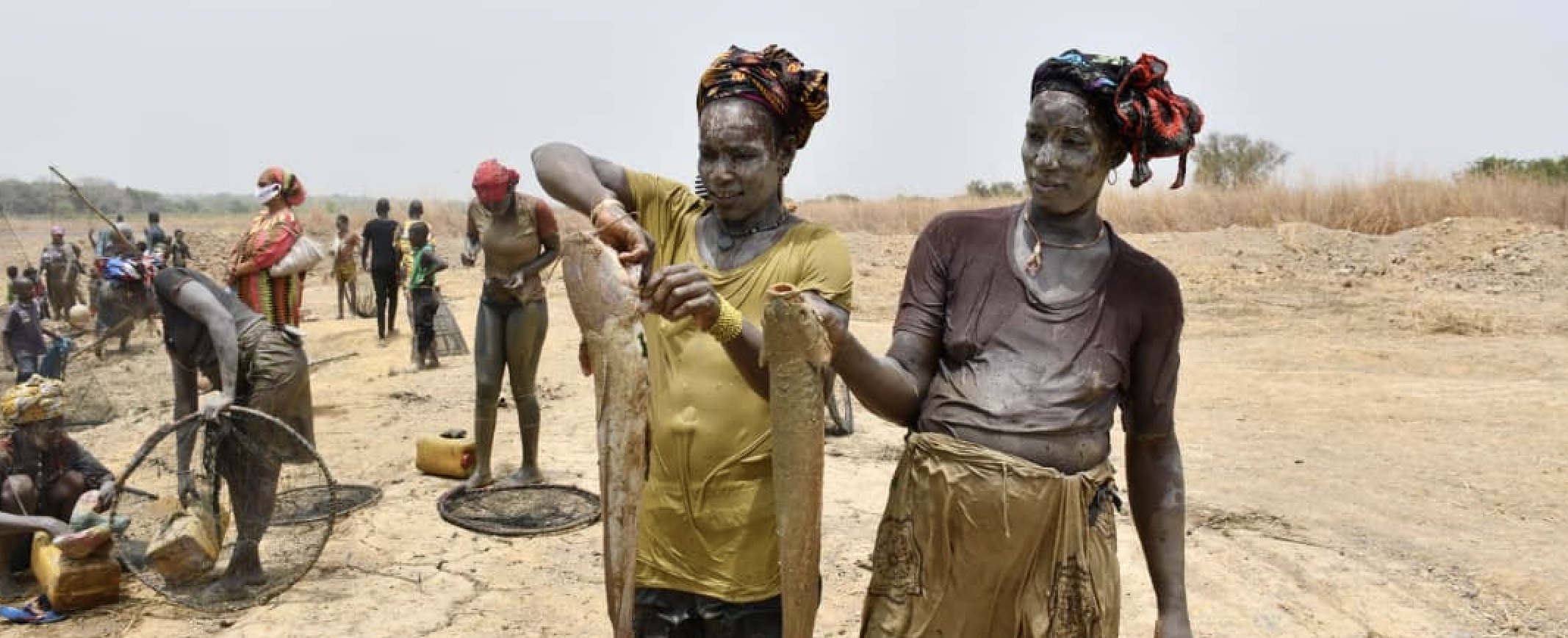
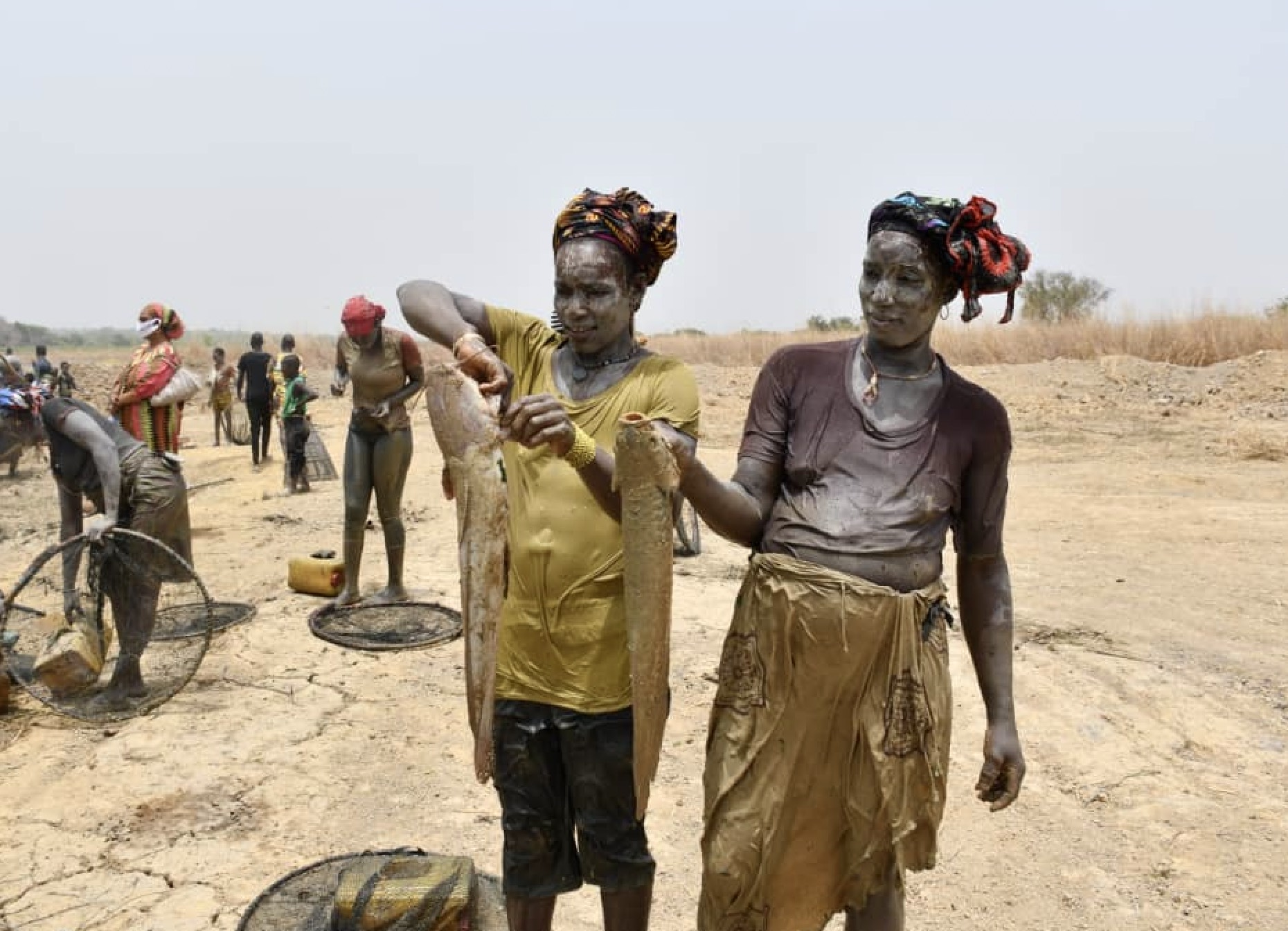
Integrating Climate Change Risks into National Development Planning Processes in Haiti
The project sought to strengthen institutional and technical capacities in Haiti to iteratively develop a National Adaptation Plan (NAP). Additionally, it aimed to integrate climate change adaptation into national and sub-national coordination, planning, and budgeting processes. This objective was achieved by advancing existing frameworks and systems, enhancing the capacities of various stakeholders to effectively contribute to the process, and establishing a mechanism to sustain the NAP process beyond this project.
Funded by the Green Climate Fund (GCF) Readiness Programme, the "Integrating climate change risks into national development planning processes in Haiti" project supported the Government of Haiti in strengthening institutional and technical capacities for iterative development of the National Adaptation Plan (NAP). This included integrating climate change adaptation into national planning and budgeting processes.
The project built on lessons from the National Adaptation Programme of Action (NAPA) implementation, as well as complementary activities currently underway in Haiti to avoid duplication of efforts. By integrating climate change adaptation into development plans, the project sought to align inclusive climate change adaptation priorities with the country’s visionary Strategic Development Plan (PSDH), National Land Use Plan (SNAT) and Disaster Risk Reduction Plan and Strategy.
As the only Least Developed Country (LDC) in the Caribbean region, Haiti’s primary economic sectors (i.e., agriculture, forestry, and fishing) are heavily affected by climatic events. As of 2023, nearly 59 percent of Haiti’s population lives below the poverty line, many of those people living in extreme poverty. According to the World Bank’s Climate Change Overview Country Summary (2022), political violence, economic imbalance, and population pressure have led to extreme environmental degradation in Haiti, with an estimated 98 percent of forests cleared for fuel. These destabilizing forces have left most Haitians extremely vulnerable to natural hazards.
Haiti has embarked on many initiatives to strengthen its resilience to climate change. However, fragmented policies and data, weak technical capacity, and inadequate climate financing, among others, have hampered the country’s efforts to plan effectively and iteratively for medium-to-long-term climate risks in its development planning and budgeting.
The project was informed by stakeholder consultations and stocktaking of existing initiatives, policies, and strategies in Haiti that were conducted by the National Adaptation Plan Global Support Programme in 2017, which resulted in an action plan to implement the NAP. The Stocktaking Report highlighted limitations and gaps, including insufficient technical and institutional capacity to effectively coordinate and implement climate change adaptation measures, scattered data and information-sharing on climate change impacts and adaptation interventions, limited capacity to monitor climate change adaptation and inform policies, and inadequate budget allocations. These served as the basis for the project activities that were later confirmed by stakeholders.
The project is expected to deliver the following results under the three key outcomes:
- Capacities of the Technical Working Group, particularly MDE (Ministry of Environment) and MCPE (Ministry of Planning), to steer the climate change coordination and integration process are developed;
- Institutional barriers to the integration of climate change into development planning and policies are reviewed and key stakeholders are sensitized to climate change adaptation and development linkages;
- Mechanisms for regularly updating and reviewing adaptation are strengthened and feed into the iterative adaptation planning process;
- Haiti's National Adaptation Plan is developed;
- A system for economic analysis and appraisal of adaptation options is established and adaptation priority interventions are integrated into the SNAT, PSDH and PNGRD;
- Universities and educational institutions are capacitated to support adaptation initiatives and the NAP process;
- Financing and Investment Strategy for the NAP is developed through a gender responsive consultative process;
- Private sector engagement in climate change adaptation is strengthened.
Project results
Despite socio-political challenges, the project advanced the NAP process in Haiti, focusing on enhancing national institutional capacities. The NAP was developed and validated by both the Ministry of Environment (MDE) and the Ministry of Planning (MCPE). The NAP document was presented at COP 27 in Egypt, the NAP Expo 2022 in Botswana, and at the launch of the National Committee on Climate Change (NCCC), providing platforms for experience-sharing and networking with potential partners. Subsequently, the NAP was published by UNFCCC in January 2023.
The project has produced strategic documents and tools, including a gender integration strategy, an exploratory report on private sector engagement in climate change adaptation, and a training mission for actors in planning and budgeting for adaptation. A NAP financing and investment strategy was developed through broad consultations with diverse stakeholders, including women’s organizations, while the communication strategy for the NAP process was validated and disseminated nationwide. An assessment of the regulatory framework and the vulnerabilities of priority sectors, such as health, agrobiodiversity, and water resources, was also conducted.
Other activities included technical working group meetings from sectorial ministries to strengthen capacity, ongoing training on climate information and adaptation integration, and stakeholder development planning and budgeting. Adaptation criteria were integrated into the Haiti Public Investment Program, while other efforts focused on incorporating SDG-aligned adaptation indicators into the national MRV system, creating new data layers with the Ministry of Environment, and organizing workshops on monitoring and evaluation, including a workshop on adaptation practices. Additionally, research programs for priority sectors with two Haitian universities were finalized.
Various initiatives aimed at revising strategic documents were supported, including the Nationally Determined Contributions (NDC), the development of an operational plan for the PNGRD and the reinforcement of the EIS-Haiti database for the monitoring of climate indicators, among others. Additional activities involved formulating addendums for the PSDH and SNAT, developing project concept notes, and promoting private sector participation in adaptation.
Several good practices and lessons learned from adaptation measures were compiled to promote successful approaches and were incorporated into the Environmental Information System platform. Moreover, collaboration with partners and stakeholders allowed the project to continue the implementation and validation of deliverables while developing synergies between climate change adaptation actions in the field.
Outcome 1: The coordination mechanism for multi-sectoral adaptation planning and implementation is strengthened at different levels
Outcome 2: The NAP is compiled with a strong evidence base for adaptation planning and priorities are integrated into the Strategic Development Plan and the Disaster Risk Reduction Plan and Strategy
Outcome 3: A financing framework for climate change adaptation action in the medium-to long-term is established.
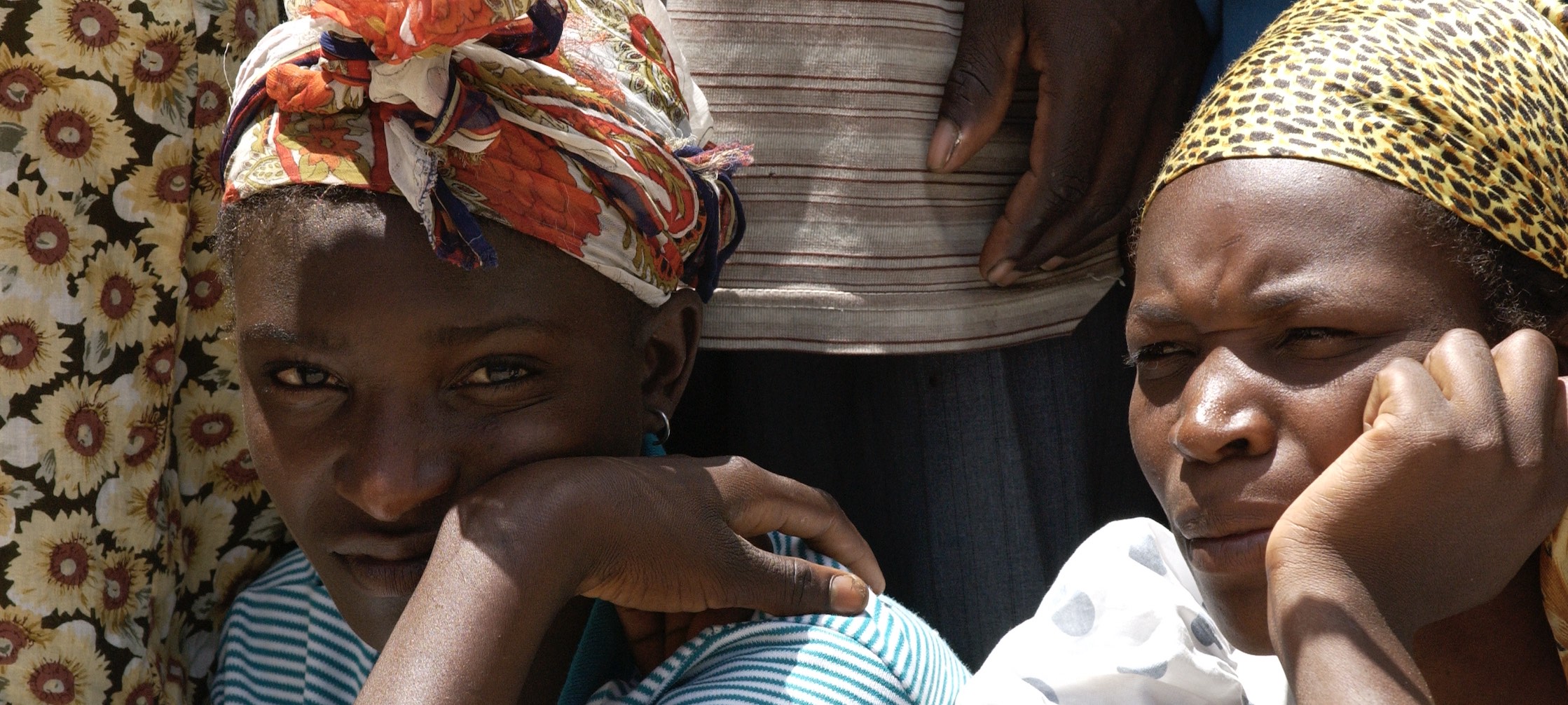
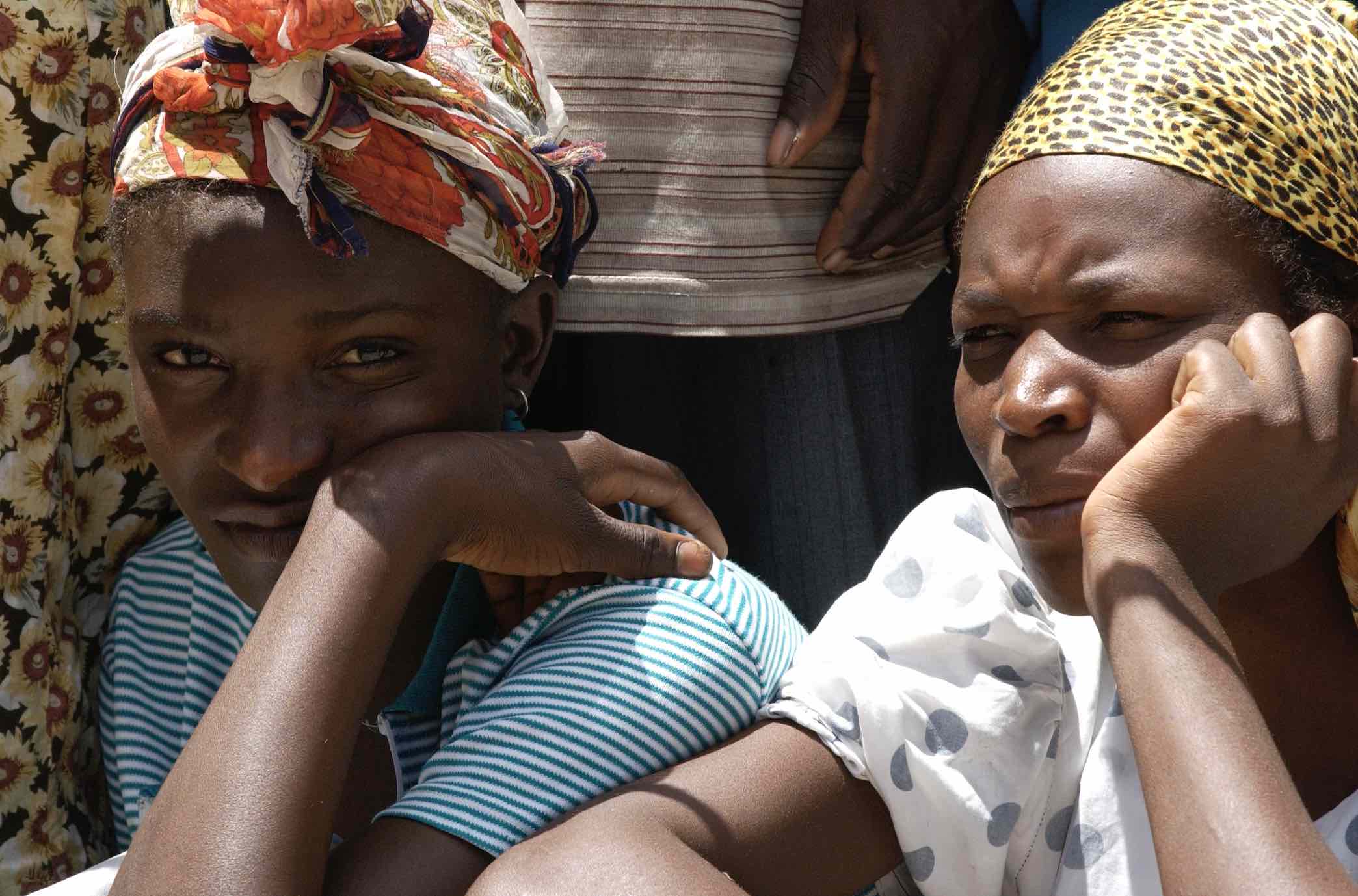
Accelerating Climate Change Adaptation Investment Planning to Enhance Resilience in Indonesia
The project supports the implementation and monitoring of the National Action Plan for Climate Change Adaptation in Indonesia (RAN-API). Operating at the national and sub-national levels, national-level activities are updating and strengthening the National Action Plan for Climate Change Adaptation (RAN-API) and enhancing the vulnerability monitoring system (SIDIK), incorporating a gender-responsive approach. Meanwhile, local activities are concentrating on risk-assessments and landscape-based adaptation for the archipelagic island site of Wakatobi. The project is focused on addressing challenges, including weak coordination and cross-sectoral information sharing, underrepresentation of vulnerable groups, and lack of adaptation criteria application in budget tagging.
The project “Accelerating Climate Change Adaptation Investment Planning to Enhance Resilience in Indonesia” addresses the barriers to adaptation planning and ensures that the National Action Plan for Climate Change Adaptation (RAN-API) is well coordinated, implemented, and monitored. The project has both a national and sub-national dimension: at the national level, it supports the next update of the RAN-API and enhances relevant assessment and budgeting systems. At the sub-national level, the project enhances landscape-based adaptation planning approaches in the archipelagic island site of Wakatobi that may be scaled up in the future. The Wakatobi District was chosen as an appropriate piloting site due to its manageable size, coastal location, and archipelagic landscape. As a marine national park, it also presents the opportunity to explore and develop ecotourism as a potential adaptation option.
Climate change impacts are already evident across various economic sectors in Indonesia. The most dominant disasters in Indonesia are floods, windstorms, landslides, and droughts, and these events are expected to be further exacerbated by climate change. The NDC (submitted in 2016 and updated in 2021, with an enhanced version released in 2022) has identified both mitigation and adaptation priorities to address these threats. Climate change adaptation has already been integrated into the country’s development planning through the National Action Plan for Climate Change Adaptation (RAN-API 2013–2025) and the fourth Medium Term Development Plan of Indonesia (RPJMN 2020-2024). While Indonesia’s adaptation planning process is considerably developed, several barriers to enhanced adaptation planning and implementation of adaptation options remain. These include a lack of effective coordination, the absence of an updated adaptation plan, inadequate focus on identifying adaptation options in vulnerable areas, unavailability of detailed information and vulnerability assessments for adaptation planning at national and sub-national levels, and challenges in tracking adaptation-related investments at national and sub-national levels. In addition, the lack of capacity for adaptation planning and budgeting is a cross-cutting issue for national ministries and sub-national governance structures.
The project aims at delivering the following results under the three main outcomes:
- RAN-API coordination and implementation strengthened;
- Legal standing for RAN-API to ensure planning and budgeting related to climate change adaptation in place;
- The RAN-API updated, including the formulation of a comprehensive financing strategy;
- Climate change budgeting system for adaptation enhanced.
- SIDIK enhanced, gender-responsive climate change risk assessment process developed;
- Existing science base for RAN-API reviewed and improved;
- Stakeholder capacity built for climate risk and impact assessment, and identifying suitable adaptation measures.
- Government staff in Wakatobi trained on gender-responsive climate risk assessments;
- Climate risk assessment for Wakatobi islands conducted using landscape-based adaptation;
- Government staff in Wakatobi trained on gender-responsive adaptation planning and budget tagging;
- A gender-responsive adaptation planning and budget tagging system developed and implemented in Wakatobi.
Outcome 1: The National Action Plan for Climate Change Adaptation (RAN-API) updated and climate change adaptation integrated in budgeting systems.
Outcome 2: Vulnerability and risk assessment process (SIDIK) enhanced at the national level for sectors identified in the adaptation component of the Nationally Determined Contributions (NDC).
Outcome 3: Integrated risk assessment and landscape-based adaptation planning and budgeting established in Wakatobi.
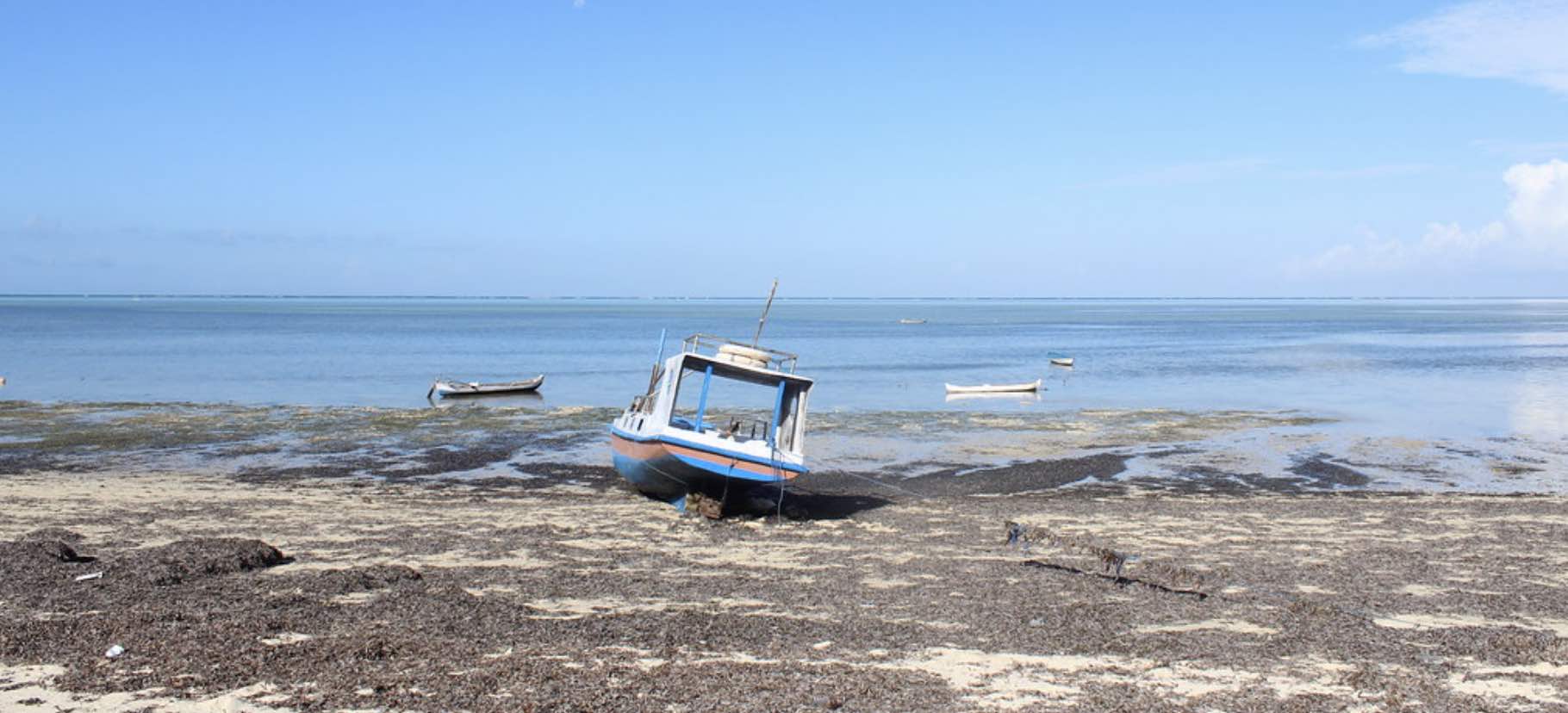

Enhancing Montenegro’s capacity to integrate climate change risks into planning
The project aims to improve Montenegro’s institutional capacity for long-term adaptation planning by strengthening its institutional coordination framework, expanding the technical capacities of those responsible and involved in adaptation planning, enhancing the evidence base required for effective decision-making, and developing a resource mobilization strategy. The project focuses on the national level and operates across four priority sectors—water resources, public health, agriculture, and tourism—aligned with existing government policies.
The overarching objective of the project “Enhancing Montenegro’s capacity to integrate climate change risks into planning” is to improve the country’s institutional capacity for long-term adaptation planning. To achieve this, the project focuses on (1) improving the institutional coordination framework and increasing institutional capabilities, (2) increasing climate information and identifying potential adaptation measures, and (3) identifying financial requirements and resources to fund adaptation investments.
The projected impacts of climate change in Montenegro include increased frequencies and intensities of floods and droughts, water scarcity, and intensification of erosion, sedimentation, snowmelt, sea level rise, as well as damage to water quality and ecosystems. To address climate change risks, the Government of Montenegro has taken several foundational steps to develop a long-term adaptation planning process that is anchored in the National Climate Change Strategy by 2030 and Montenegro’s National Communication. While these steps provide a starting point, several gaps were identified: (1) An underperforming coordination framework, (2) a lack of institutional capacity, (3) insufficient information, and (4) a lack of finance to fund adaptation investments, and (5) a private sector that has a low capacity to understand and respond to climate vulnerabilities and risks.
This project aims to establish a foundation for systematic and iterative adaptation planning in Montenegro by identifying climate risks and adaptation options. Focusing on four key sectors, the strategic approach aims to enhance resilience, facilitate access to international funding sources, and engage the private sector in providing financial resources. The project will also strengthen the awareness and capacities for adaptation planning of multiple stakeholder groups to create a better learning environment and iterative adaptation planning and action. The project is the first stage (Phase I) of what is intended to be a two-staged approach to utilizing Green Climate Fund support for adaptation planning. The second stage will build on Phase I, amongst others, by expanding the adaptation planning process to additional sectors, integrating the private sector further, and enhancing strategies for financing and tracking adaptation finance.
Project Results
Output 1.1: Institutional Capacity for Adaptation Planning Assessed and Enhanced
Capacity gap assessments have been conducted, focusing on key government stakeholders, the private sector, and civil society organizations. An assessment of the capacity of institutions in terms of adaptation to climate change and green development was performed.
The evaluation process included more than 300 actors, institutions at the national and local level, public and private companies, operating in various fields. The assessment aimed to determine the public sector’s ability to plan and implement climate change adaptation processes, while analysing the need for capacity building and training of staff. Within this research, the institutions were evaluated concerning seven elements defined by the Capacity Assessment Tool, specifically designed for the implementation of this activity in Montenegro. The results of the initial analysis indicated a general weak systemic coordination and cooperation climate change adaptation. Capacity assessments ranged from low to baseline, while strong capacities to respond to climate challenges were not identified for any of the assessed institutions.
Moreover, collaboration with the Transition towards the low emissions and climate-resilient economy in the Western Balkans and Turkey (TRATOLOW) project and the GoM adaptation focal point was established, resulting in the drafting of a Gender and Climate Change Adaptation Training program. Furthermore, a concept for the Dialogue for Development seminar series was developed and a two-day training workshop on Monitoring and Indicators for Adaptation was conducted in collaboration with TRATOLOW.
In 2023, efforts focused on further improving the gap assessment, developing online training modules, and sustaining the Dialogue for Development Seminar Series. Additionally, the project finalized the design of the Training Terms of Reference (ToR) for the Institute of Hydrometeorology and Seismology (IHSM) staff, initiating the subsequent training process.
Output 1.2: Institutional Coordination to Support Adaptation Planning Strengthened
In the realm of institutional coordination, the project supported the redesign of the National Council for Sustainable Development (NCSD), resulting in the Government of Montenegro upgrading the NCSD as a unit in the Government in 2021. Activities in 2022 saw the operationalization of the NCSD, including key appointments and capacity-building initiatives. The project played a supportive role in amendments to the Law on Protection from the Negative Effects of Climate Change.
In a broader sense, the main task of the Council is to direct and monitor the implementation of policies that determine the country’s development direction and ensure the sustainability of these policies. The Council is a platform for sharing knowledge, expertise, information, and practical experience. In addition to the representatives of relevant institutions, business community and NGOs, the representatives of youth and the media are also members of the NCSD.
The new NCSD held its first constitutive session during the 36th meeting in December 2022. Legal advisory support was extended for further amendments to the Law on Protection from the Negative Effects of Climate Change. The project also aimed to finalize the formation of a working group for Climate Change Adaptation (CCA) and provide support for legislative changes and additions.
In 2023, the project formed a working group for climate change adaptation and continued providing support for legislative changes, reinforcing the legal framework for climate change adaptation.
Output 2.1: Gender-specific climate change-Driven risks and vulnerabilities in priority sectors identified, broad goals, and potential adaptation measures developed
The project has made significant strides in identifying gender-specific climate change-driven risks and vulnerabilities. In 2021, a company was selected to review and consolidate climate risk assessments, engaging in a consultation process and conducting stocktaking workshops.
In 2022, the project prepared initial drafts of climate risk assessments, conducted initial consultations, and initiated the selection process for lead international and local experts. Assessments for climate change-driven risks in priority sectors were finalized and activities progressed with a combined approach involving the lead writer of the NAP and local experts.
In 2023, a company was selected to expand on the prepared assessment and develop guiding materials for the Government of Montenegro (GoM). Additionally, efforts focussed on developing gender-sensitive adaptation goals, targets, and indicators.
Output 2.2: National Adaptation Planning Processes Established
In 2021, a company was selected to undertake a public awareness communications campaign. During this phase, the project participated in a national workshop on climate change and gender, presenting its work to a broader audience.In 2022, the project selected lead international and local experts, finalized the inception report, and outlined plans for a Gender Action Plan and Gender Communication Plan.
Activities included ongoing coordination with the public awareness communications campaign and also focused on increasing awareness and participation in climate change adaptation, supporting events such as Green Schools Day 2022, the presentation of the Second Voluntary National Report (VNR) at the High-Level Political Forum on Sustainable Development (HLPF) in New York, and the Green Montenegro International Film Fest (GMIFF).
In 2023, the project prepared the draft National Adaptation Plan (NAP) for public consultation.
Output 3.1: Mechanisms for Funding Adaptation Investments Identified
The project initiated the selection process and inception phase for activities related to identifying mechanisms for funding adaptation investments in 2022. This involved the development of Terms of Reference (ToR) and subsequent selection processes, which were further developed in 2023.
Output 3.2: Private Sector Engagement in Adaptation Strengthened
During 2022, the project developed Terms of Reference (ToR) for activities related to strengthening private sector engagement in adaptation. The inception phase for these activities was initiated, and implementation of the selection process to further enhance private-sector engagement was developed in 2023.
Outcome 1: Adaptation planning governance, institutional coordination, and technical capacity strengthened;
Outcome 2: An enhanced evidence base for designing gender-sensitive adaptation solutions;
Outcome 3: An adaptation finance mobilization strategy developed.
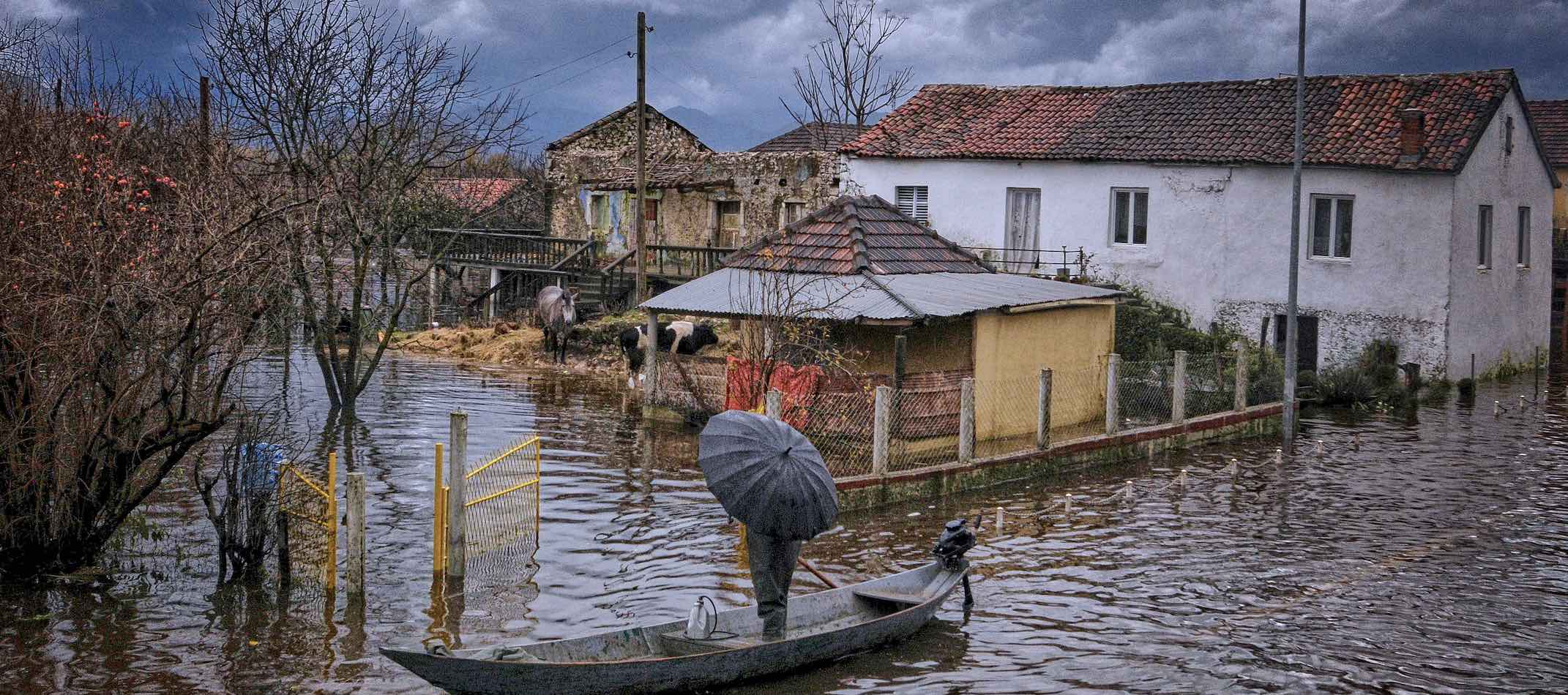
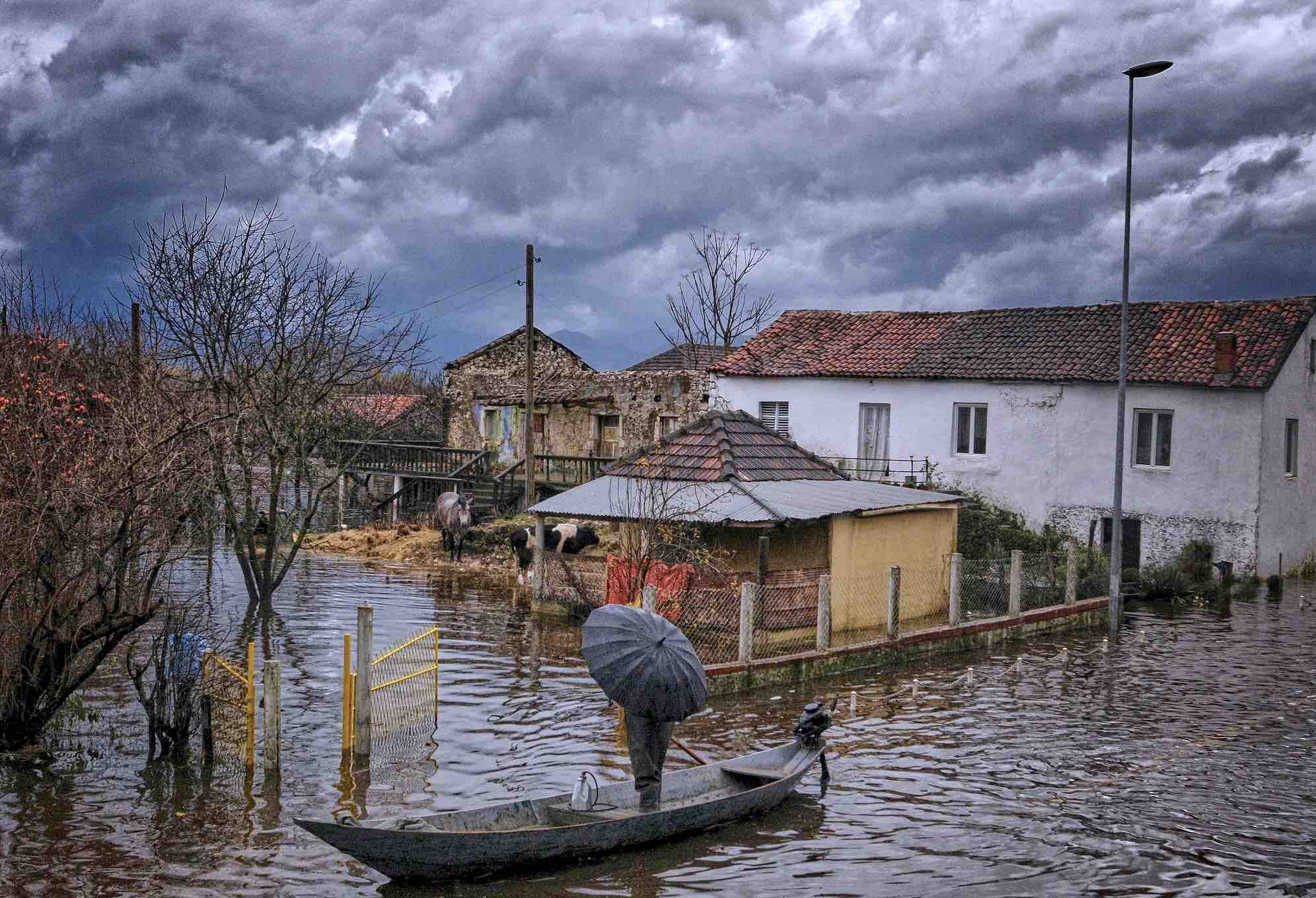
Supporting the foundations for sustainable adaptation planning and financing in Morocco
The project's goal is to support Morocco in creating a systematic framework for integrating adaptation needs into development planning. This involves establishing the foundations for sustainable finance and institutional frameworks for adaptation planning at both national and regional levels. Sub-national activities include developing regional adaptation plans for five regions: Souss Massa, Marrakech Safi, Béni Mellal-Khenifra, Draa Tafilalet and Oriental regions.
Given its geographical location, climate, and coastline, Morocco is highly vulnerable to climate change. The projected impacts by 2050 will significantly affect key productive sectors and infrastructures of the Moroccan economy. In 2022, Morocco suffered from a fourth consecutive year of low rainfall, facing a historic drought. With these structural vulnerabilities, the urgency of adaptation to climate change has become significant.
Morocco has undertaken numerous climate change adaptation and risk management projects, addressing specific issues such as water, agriculture, disaster risk, monitoring frameworks, data, and capacity building. However, these efforts have been implemented in isolation and in a fragmented manner, lacking a cohesive and interconnected approach. Moreover, climate change risks and adaptation needs have been excluded from development planning and investment decisions, particularly at the regional level.
Morocco started its national adaptation planning process in 2015 and developed a detailed NAP roadmap. Achieved in 2021, the NAP serves as a comprehensive medium- and long-term adaptation strategy, incorporating key actions and strategic objectives. The formulation of the NAP involved extensive consultations with key stakeholders and received formal endorsement from the Government.
The Moroccan Climate Change Policy and the NDC (updated in 2021) outline sectoral adaptation goals and targets and highlight critical cross-cutting pillars. The project builds upon the progress to date and helps operationalize the NAP, with a specific emphasis on the subnational level, by translating strategic objectives into tangible actions. Moreover, the project aligns with and complements other ongoing initiatives in Morocco related to adaptation and climate risk management.
In addition to the main project implementing partner, the Ministry of Energy Transition and Sustainable Development, the project works with partners in government, non-governmental organizations, and the private sector. The project seeks to create a framework for systematically integrating adaptation needs into Morocco's development planning, building upon the existing foundation for climate change adaptation. This framework will enable the implementation of high-impact adaptation measures building on strengthened institutional arrangements for adaptation planning, including strategic coherent planning instruments aligned with national priorities and sustainable sources of adaptation finance.
The project aims to design a framework for systematic integration of adaptation needs into the country’s development planning building upon the existing foundation for climate change adaptation. The expected results are grouped around the three main outcomes and include:
- setting up of coordination and governance structure for adaptation at the national and regional levels;
- strengthening national and regional M&E system;
- improving communication and awareness on adaptation planning;
- mainstreaming gender sensitivity into government’s planning processes;
- assessing climate risks and vulnerabilities for key sectors in three regions;
- identifying adaptation options, assessed and prioritized in the three selected regions;
- elaborating five regional adaptation plans;
- sustainable financing of regional adaptation plans;
- strengthened private sector engagement and investment potential.
Project updates
The project inception workshop was held in March 2022 with the participation of all project stakeholders.
Output 1.1. Regulatory text defining coordination structure and institutions mandate is in place.
A work plan and schedule for national and regional coordination bodies were created and approved, including the development of guidelines for climate information collection and for climate change risk and vulnerability assessments at the regional level for key sectors (water, agriculture, and infrastructure).
Output 1.2. National and regional Monitoring and Evaluation (M&E) system for adaptation developed.
Consultations were undertaken on building the M&E system, involving the development of climate change metrics and indicators linked to existing initiatives in Morocco. Activities have included analyzing existing systems, proposing scenarios for consolidating national platforms (MRV), drafting a guideline for gathering standardized climate information, including loss and damage data and socio-economic and gender-disaggregated data to feed into the M&E system, and assessing improvements for the Regional Information System on Environment and Sustainable Development (SIREDD).
Output 1.3. Communication and awareness to support effective adaptation planning improved.
A communication and awareness strategy was prepared and published in 2023, including the design of an adaptation repository website.
Output 1.4. Gender sensitivity is applied and addressed throughout the project life-span.
Stakeholder consultations were held in 2023, including a stocktaking of existing approaches and identifying good practices for gender integration into the project.
Output 2.1. Climate risks and vulnerabilities assessed in key sectors in 5 regions.
Consultations for mapping existing datasets and metrics were launched in 2023, accompanied by consultations for establishing guidelines and methodologies for regional-level climate change risk and vulnerability assessments in key sectors.
Output 2.2. Adaptation measures identified, assessed, and prioritized in the 5 selected.
Adaptation measures have been identified, assessed, and prioritized in five selected regions (Souss Massa, Marrakech Safi, Béni Mellal-Khenifra, Draa Tafilalet, and Oriental). Consultations related to the elaboration of regional adaptation plans for the pilot regions were held in 2023.
Output 2.3. Five regional adaptation plans formulated and integration with regional development and land-use plans facilitated.
The updated territorial climate plans (PCTs) adaptation chapter for the five pilot regions is being developed, along with a guideline for integrating PCTs into regional development and planning. Two interregional dialogues with the pilot regions are being arranged.
Output 3.1. Sustainable financing of regional adaptation plans strengthened.
Efforts to bolster sustainable financing for regional adaptation plans are in progress through consultations and activities. This includes developing an indicative project pipeline and conducting pre-feasibility studies for key adaptation priorities in each region.
Output 3.2. The private sector is strongly engaged and, its capacity to support adaptation is further enhanced.
At the national level, the House of Representatives of the Kingdom of Morocco adopted on October 18, 2022, framework law No. 03.22 forming the Investment Charter. This framework law aims to "promote private investment” to reach the rate of two-thirds of total investment by 2035, following the recommendations included in the New Development Model. This legislative breakthrough is helping to promote private-sector engagement in adaptation.
A two-day national climate investment forum was held in 2023, targeting financial institutions and private equity funds to discuss opportunities and challenges in private investments for adaptation. An assessment of the status, barriers, and opportunities for private sector investment was also undertaken.
Output 3.3. The private sector´s investment potential in adaptation is further strengthened.
The private sector's investment potential in adaptation is being strengthened through activities such as analyzing the interest, feasibility, and costs for setting up business incubators and organizing an ‘Adaptation Innovation Competition’ to encourage innovation and entrepreneurship. Additionally, an analysis of the national catastrophic risk insurance program through a public-private partnership is being conducted.
Outcome 1: The institutional framework for adaptation planning is strengthened and awareness is enhanced at national and regional levels.
Outcome 2: Regional adaptation plans (Territorial Plans against Global Warming) formulated for five vulnerable regions in Morocco and integration into regional development and land use plans facilitated.
Outcome 3: The foundations for sustainable finance for adaptation are strengthened.


Advancing medium and long-term adaptation planning and budgeting in Niger
The project activities aim to strengthen adaptation-related prioritization and planning, financing and capacity development, supporting Niger in integrating climate change into medium- and long-term development planning and budgeting through the NAP process. Reducing Niger’s vulnerability to climate change requires greater investments and greater integration of climate change adaptation and disaster risk reduction into ongoing development programmes. The project works in synergy with other initiatives. It supported the National Disaster Risk Prevention and Management Facility to integrate climate change into its strategy, and the development of the NDC through gender studies and climate scenarios. The project also enables the implementation of Niger's national climate change strategy. The project addresses the main challenges in integrating climate change adaptation into planning and budgeting in Niger, as identified in its NAP Stocktaking Report.
The exposure to climate risks, associated with its position as a Sahelian landlocked country, makes Niger one of the most vulnerable countries in the world. The 42.8 percent of the GDP, and 80 percent of the workforce are employed in the agriculture, forestry and livestock sectors. Climate change is expected to worsen climate risks over the next decades, with an increase in the frequency of droughts, resulting in a decrease in agricultural production, an increase in grazing pressure on pastoral ecosystems, and consequently soil erosion on a mass scale, threatening food security; and floods resulting from the heavy rainfall. The country was ranked 188 out of 188 in the UNDP’s Human Development Index in 2015, with 89.8 percent of the population living in multidimensional poverty.
The foundations for the NAP process have been built through the preparation of the National Adaptation Programme of Action (NAPA) in 2006 with support from UNDP and the Global Environment Facility (GEF). The NAPA identified urgent and most immediate needs in seven vulnerable sectors and fourteen priority adaptation interventions. The National Climate Change Policy (PNCC) adopted in 2013 provides the overall strategic framework to tackle climate change. To move beyond urgent and immediate needs, and towards a medium-term approach, Niger intends to integrate climate change into medium- and long-term development planning and budgeting through the NAP process, under its obligation to the UNFCCC and as stated in its PNCC. This process will contribute to ensuring that the country’s long-term development strategy - starting with its Sustainable Development and Inclusive Growth Strategy (SDDCI) and its National Economic and Social Development plans - be based on an understanding of climate-related risks and opportunities for inclusive growth and sustainable development.
Niger has been advancing its NAP process by conducting a preliminary stock take of relevant initiatives on climate adaptation and mainstreaming to identify gaps and needs. A NAP roadmap was subsequently drafted, which outlined the main steps and timeline of advancing the NAP process in Niger.
This project will be steered at country level by the Executive Secretariat of the National Council of Environment for Sustainable Development (SE/CNEDD), which is the coordinating body for all Rio Conventions and climate change-related initiatives and the National Designated Authority to the GCF. It will closely engage the Ministry of Planning and the Ministry of Finance, as well as key sectoral ministries, national training and research institutions and civil society, including the private sector. It will closely coordinate with other related initiatives such as the GEF-LDCF adaptation planning in the water sector project, the EU-funded PARC-DAD and the World Bank Pilot Programme for Climate Resilience. The project is aligned with the “Nigeriens Nourish the Nigeriens” Initiative (Initiative 3N), the Sustainable Development and Inclusive Growth Strategy (SDDCI), the National Economic and Social Development Plan (PDES), and the National Climate Learning Strategy.
Project updates
The draft NAP was developed through consultations (ministries and technical institutions, representatives of communities, the private sector, religious and traditional leaders, women's and youth organizations, civil society and media), combined with an analyses of climate data and vulnerability to climate change and assessments and capacity building of stakeholders. 25 adaptation options were identified and prioritized for the five sectors (livestock, health, transport, forestry and wetlands) and the draft NAP document was enriched and validated through regional workshops; the final validation through a national workshop is scheduled for 2022.
In collaboration with other entities, including the Executive Secretariat of the National Environment Council for Sustainable Development (CNEDD), a monitoring and evaluation system is being set up to track the progress of climate change adaptation initiatives.
In addition, a communication and knowledge management strategy has been developed to disseminate the results of the NAP process.
Output 1: National mandate, strategy and steering mechanism are in place and gaps are assessed and addressed
Output 2: Preparatory work for the NAP undertaken to develop a knowledge-base and compile a NAP
Output 3: NAP implementation facilitated
Output 4: Mechanisms for Reporting, Monitoring and Review of NAPs and adaptation progress in place
Output 5: Funding strategy for the NAP and CCA is available
